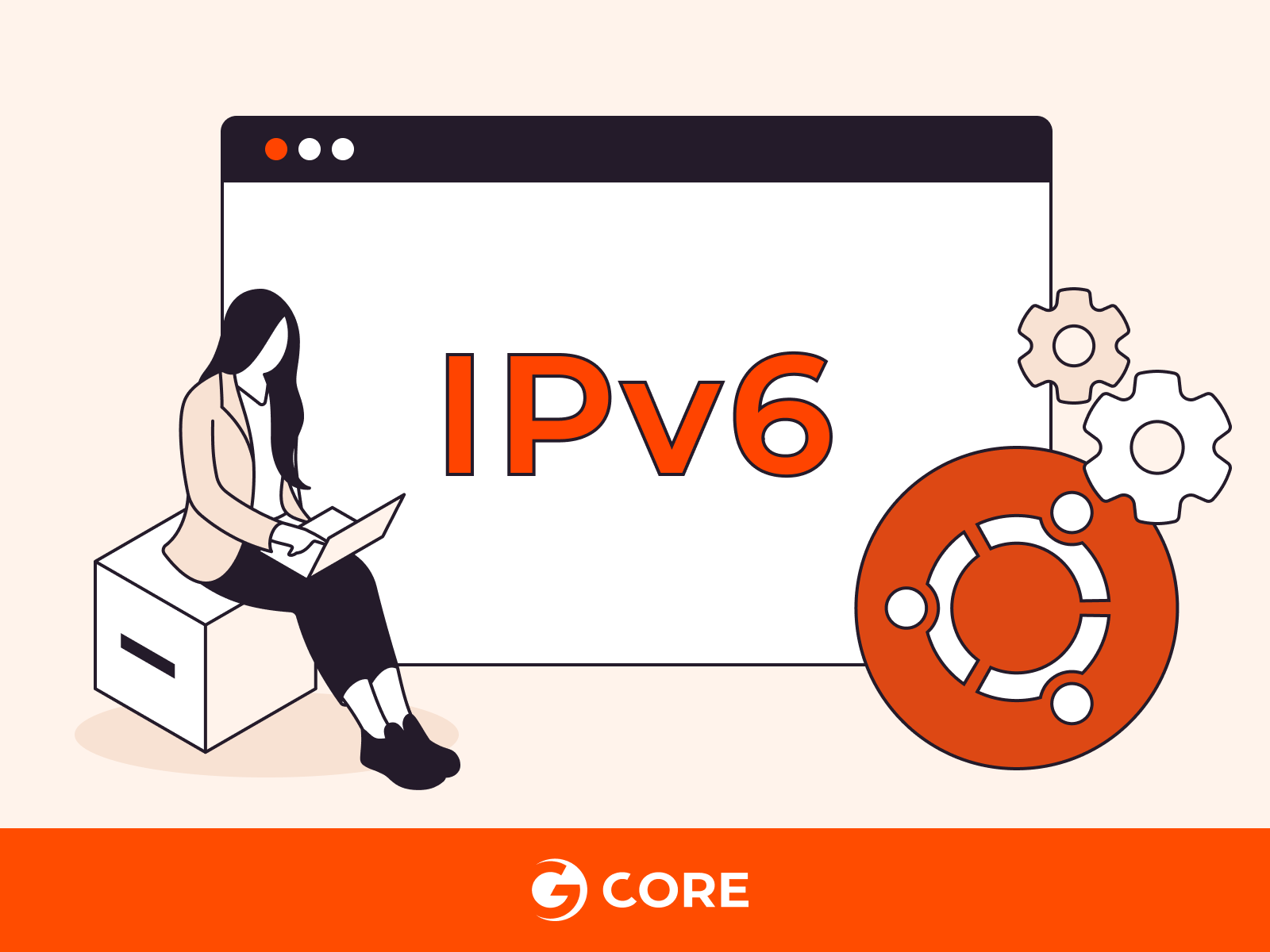https://gcore.com/learning/configure-ipv6-address-ubuntu/
https://gcore.com/learning/configure-ipv6-address-ubuntu/
How to Configure an IPv6 Address in Ubuntu

Configuring an IPv6 address in Ubuntu is crucial for enhancing your network’s capabilities and security. This brief guide will walk you through the simple yet essential process of setting up an IPv6 address on your Ubuntu system, ensuring you are up-to-date with the latest internet protocol technology.
What Is an IPv6 Address and Its Key Features
IPv6 (Internet Protocol Version 6) is the most recent version of the Internet Protocol (IP), the communications protocol that provides an identification and location system for computers on networks and routes traffic across the Internet. In Ubuntu, as with other operating systems, IPv6 is used to expand the number of IP addresses available and to solve the limitations of IPv4.
- Larger Address Space. IPv6 uses 128-bit addresses, significantly expanding the number of possible addresses compared to the 32-bit addresses of IPv4. This is crucial for accommodating the growing number of devices connected to the internet.
- Simplified Header Structure. IPv6 has a more streamlined header than IPv4, which improves processing efficiency. Unnecessary fields and options have been removed in IPv6.
- Improved Security. IPv6 was designed with security in mind. IPsec, a suite of protocols for securing internet protocol communications, is built into IPv6. This provides end-to-end encryption and authentication, although it can also be used with IPv4.
- No More Network Address Translation (NAT). With the abundance of addresses, the need for NAT (which was used in IPv4 to alleviate the shortage of IP addresses) is eliminated in IPv6. This simplifies routing and device configuration.
- Auto-configuration. IPv6 supports both stateful and stateless address configuration. Hosts can automatically generate their own addresses using Stateless Address Autoconfiguration (SLAAC), reducing the need for a DHCP server.
In Ubuntu, IPv6 is typically enabled by default. However, it can be configured and managed using various tools and commands, such as ifconfig, ip, and editing configuration files like /etc/network/interfaces or using GUI tools for network management.
Process to Configure an IPv6 Address in Ubuntu
Configuring an IPv6 address in Ubuntu involves several steps, and the process can vary depending on whether you’re using a desktop or server version, and whether you want to use a static or dynamic IP address. Here’s a general guide for configuring a static IPv6 address on Ubuntu.
#1 Check for IPv6 Support
First, ensure your network interface supports IPv6. Open a terminal and type the following command and look for an IPv6 address, which indicates that IPv6 is enabled.
or
#2 Edit Network Configuration File
You’ll need to edit your network configuration file. Open the network configuration file in a text editor. For instance, if you’re using Netplan (default in Ubuntu 18.04 and later), the file could be in /etc/netplan/01-netcfg.yaml. For older versions, it might be /etc/network/interfaces.
Note. Replace 01-netcfg.yaml with the appropriate file on your system.
#3 Configure Static IPv6 Address
Add the IPv6 configuration details. Here’s an example for Netplan:
For older versions, the configuration in /etc/network/interfaces may look like:
#4 Apply the Changes
After editing the configuration file, apply the changes:
For Netplan:
For older versions:
Replace eth0 with your network interface name.
#5 Verify the Configuration
Check if the IPv6 address has been successfully configured:
You should see the new IPv6 address listed under the appropriate interface.
Additional Notes
- Replace eth0 and enp0s3 with the actual name of your network interface.
- The IPv6 address 2001:db8::c0ca:1eaf/64 and the gateway 2001:db8::1 are examples. Use the IPv6 address and gateway provided by your network administrator or ISP.
- Ensure the netmask (like /64) is correct for your network.
- If you’re using a GUI, you can configure IPv6 through the network settings in the system settings panel.
Conclusion
Want to run Ubuntu in a virtual environment? With Gcore Cloud, you can choose from Basic VM, Virtual Instances, or VPS/VDS suitable for Ubuntu:
- Gcore Basic VM offers shared virtual machines from €3.2 per month
- Virtual Instances are virtual machines with a variety of configurations and an application marketplace
- Virtual Dedicated Servers provide outstanding speed of 200+ Mbps in 20+ global locations


 浙公网安备 33010602011771号
浙公网安备 33010602011771号